Snowcat skiing has deep roots at Purgatory Resort in southwest Colorado, where epic powder runs are just a quick ride away.
Boarding a flight that coincides with a massive storm system due to hit precisely where you’re landing is usually cause for cold feet and remorse for declining travel insurance. One of the few exceptions is a backcountry ski trip to the ominously named Purgatory Resort in Colorado's San Juan Mountains.
The promise of fresh powder—heaps of it—is what's keeping my toes warm and spirits aloft amidst the grave warnings of major thunderstorms and “atmospheric rivers” set to rip across the country.
Over the next few days, this rugged, remote extension of the Rockies could get up to 50 inches in some spots. Skier’s translation: If these slopes can somehow be reached before the storm hits, the highways close, and all remaining flights are canceled, how much purgatorial fun will await the privileged few stuck on the other side with their skis, snowboards, and GORE-TEX party suits?
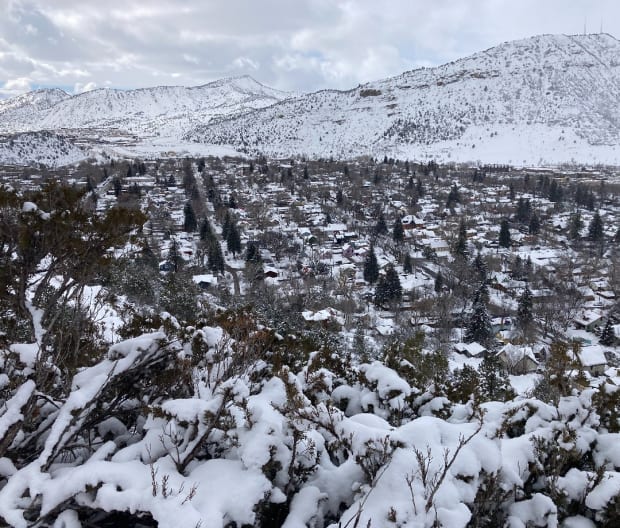
Getty Images/Kara Grubis
“We may not have the consistent two-to-four inches every few days that you get up at Vail, Aspen, and those big front range resorts, but when we’re hit with snow down here, we really get blasted,” a local proudly assures our group of skiers and boarders converging from as far away as Australia.
We're in Colorado’s deep southwest to experience what’s reputedly some of the best vehicle-assisted backcountry powder skiing available in Rocky Mountain country. And by vehicle assisted, I don't mean a helicopter. This is snowcat skiing.
We’re gathered at Ska Brewing, a craft beer shrine in downtown Durango, fueling up on local ski intel, wood-fired pizzas, and homemade ales with names like Modus Hoperandi and Pink Vapor Stew, before booting it to Purgatory Resort ahead of the imminent storm. Within hours, many blizzard-battered roads in this remote corner of the state will be all but impassable.
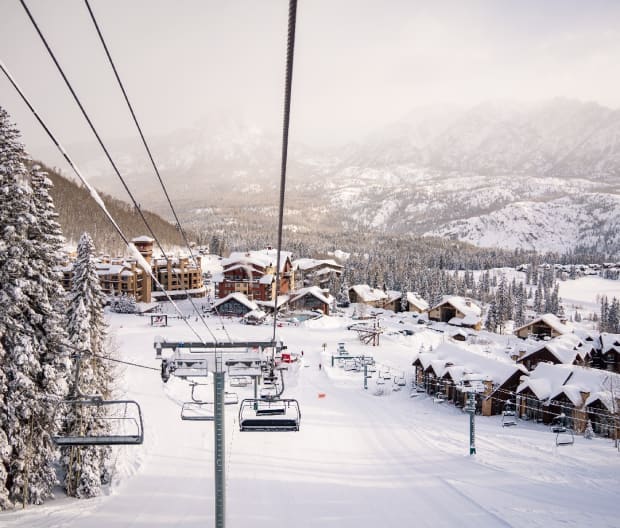
Christian Ridings
The Road to Purgatory
On a clear day, the 25-mile drive north on Route 550 from Durango to Purgatory is a picturesque opening scene along the famed San Juan Skyway, which loops past the postcard Western towns of Ouray, Silverton, and Telluride, as well as some of the most dramatic, wheel-clenching alpine imagery you could ever spy on a narrow, precipitous highway with no guard rail. But that’s not today.
Right now, this road could pass for the North Pole on the wrong evening. Down in Durango, it was just a trickle of flurries. Heading up to Purgatory, giant flakes hurtle horizontally against the windshield. Perched at nearly 9,000 feet, the small ski resort’s turnoff is barely detectable through a blur of white.
Checking into the quiet, comfy Purgatory Lodge midweek in late February, we park beside some snow-dusted cars bearing New Mexico, Arizona, and Texas plates in an otherwise empty overflow lot.
Purgatory has been a cherished haunt for Four Corners and Lone Star skiers since the mid-60s. Hiding a couple hundred miles of rugged peaks south of central Colorado’s I-70 ski resort traffic, the laidback, family-friendly spot attracts a loyal clientele fiercely attached to everything about this glitz-free hideaway with its 11 lifts, 2,000-foot vertical, and 260 inches of average annual snowfall.
Its chilling name is derived from the nearby Animas River’s original Spanish moniker (Google translate if you dare), Las Animas Perdidas en Purgatorio. The hill’s mom & pop lift ticket prices (usually well under $100, and as low as $42 if you buy online far enough in advance) are perhaps the biggest draw of all.
“Tell me another place in the Rockies where you can get on the hill for under $90 and your 12-and-under skis for free,” says Steve Larese, an Albuquerque-based journalist and longtime Purgatory fan joining our snowcat group. “You can’t beat it.”
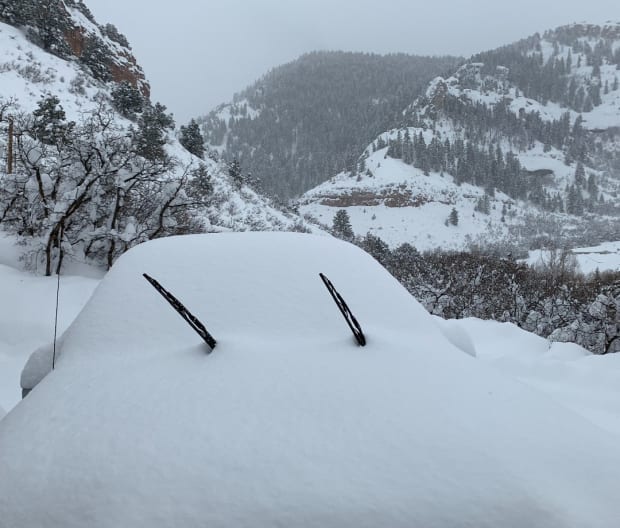
Getty Images/Jon Paciaroni
Stuck (Happily) in Purgatory
The next morning, it’s still snowing hard, and those cars parked outside the lodge have been remodeled into indistinguishable white lumps. Route 550 has been shut down by the Colorado DOT in both directions along with several other highways. Officials are now urging drivers not to enter Colorado. Already one of the bigger storm cycles to hit this corner of the state in the last few years, this one is far from over.
“You are now stuck in Purgatory,” I’m cordially informed by James Graven, an all-around southwest Colorado alpine adventure authority. Graven's been following snow and highway reports on our group’s behalf, and while the news sounds pretty grim virtually everywhere else, it’s kind of guilt-swallowingly awesome here. “You could not ask to be grounded in a better place at a better time,” assures Graven. “Have fun up there.”
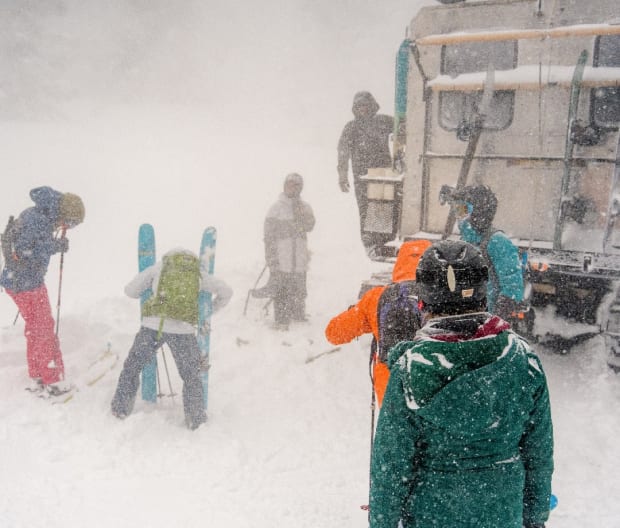
Christian Ridings
For the fortunate few who’ve beaten all the road closures, it’s going to be an epic day of fresh tracks on the resort’s self-proclaimed fun-as-hell runs—branded with Purgatory-ish names like “666” and “Hades.” As for the dozen of us assembled in the plaza for an 8a.m. orientation meeting at the office of Purgatory Snowcat Adventures (PSA), something even wilder is in store a few miles north of the resort in the dense, blanketed back hills of San Juan National Forest.
“Does everyone know what a tree well looks like?” our PSA lead guide, Karl Kecman, asks the group as an ice-breaker while equipping us with avalanche transceivers, shovels, and probes. “I believe so,” someone eventually says.
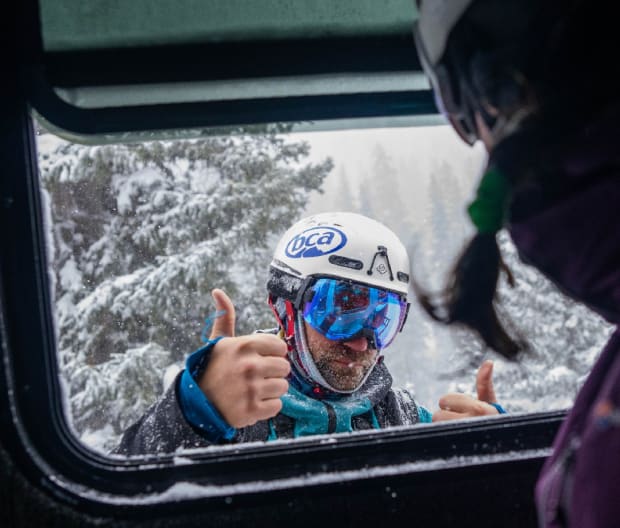
Isaac Dean
The hidden hazards of tree wells—those potentially lethal hidden gullets of loose snow lurking around random evergreen trunks—are reviewed. That’s a good thing, because there will be quite a few trees where we’re heading.
“Avalanche danger is high,” says Kecman, while covering a range of cat skiing safety essentials. On a stormy day like today with thick new layers of snow, we’ll be safely avoiding the more hazardous slide areas above the treeline, sticking to the forested slopes, “and always paired-up in buddies,” stresses Kecman, who leads a wildfire crew for the U.S. Forest Service in the warmer, dryer months.
PSA’s trips cover over 35,000 acres of terrain across the vast alpine backcountry of San Juan National Forest. Launched in the mid-90s, the company now calls itself the largest cat skiing operation in Colorado.
An experienced skier, I’ve never strayed much beyond lift-accessed terrain. Today will be a whole different deal—that’s obvious and exciting enough. Beyond that, I’m not sure what to expect.
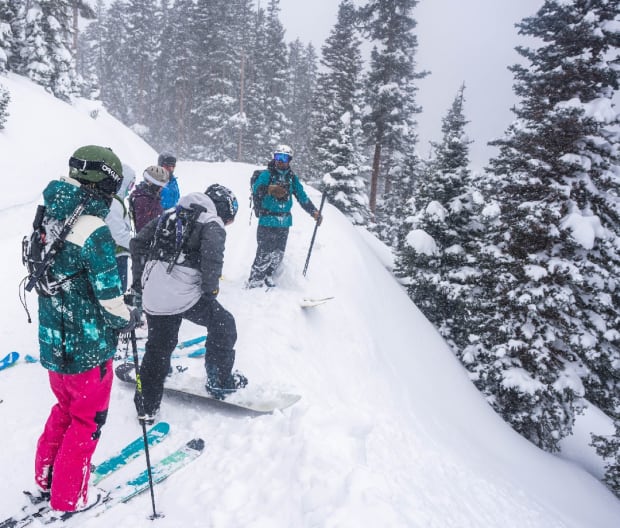
Isaac Dean
Look Where the Cat Dragged Us
The first revelation during a day with Purgatory Snowcat Adventures is how much cozier riding up a mountain in a snowcat is compared to sitting on an exposed chairlift in a light morning blizzard. During our chatty, tilted ride to the day’s first drop, spirits are high: OutKast blares from a dangling speaker and stray pine branches lash at blurry windows on a sheer mountain ledge in an area called the Cascade Zone. Casually weaving up the steep, forested mountainside, our affable cat operator—who goes by the name “Friday”—handles this hairy drive like it’s a breezy commute in the Denver 'burbs.
The snowcat halts at our high point for the day, just above the treeline. The door flings open and we’re brusquely reminded where we are—a snowy forest at 11,000 feet somewhere in the San Juan Mountains during perfect storm week.
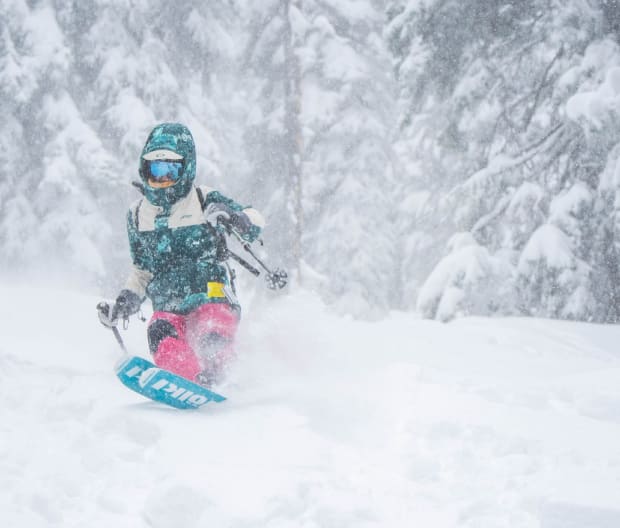
Isaac Dean
“I’m gonna set a left boundary line,” Kecman howls over the competing wind as we kick on our skis and boards. “That means you need to stay to the right of my tracks and keep within about 50 yards of them. If you cross my left boundary line or stray too far to the right, you could end up in a place you don’t want to be.”
With that, Kecman drops into a forested slope of knee-high deep powder, swiftly vanishing on a boundary-line “run,” which bears little resemblance to your favorite glade in Snowmass, Steamboat, or Whistler. There are no tracks, no obvious lines, no shortage of trees to negotiate.
Heading down in buddy groups of two or three, our warmup is an instant pick-your-adventure run to a muffled soundtrack of ecstatic whoops and hollers in the deep, densely angled woods. From above, this pitch looked sufficiently steep for a good cruising speed, but we’re soon doused in so much snow—momentarily up to my ski-buddy’s armpits—to give gravity a serious run for its money.
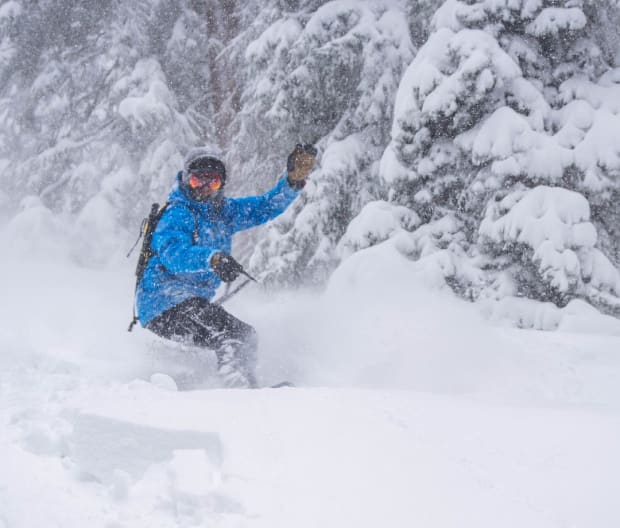
Isaac Dean
“We’ll head to some steeper stuff,” says Kecman from a lower forested ledge.
Members of our group start popping out of the trees magically within 20 yards of Friday’s idling snowcat, ready to scoot us back up to carefully curated perches for about a dozen more runs.
Our second one is a speedier shot through a cloud of powder and clusters of old-growth pines. The heavy winds have eased in the trees. Giant flakes float down like confetti. It’s about as pillow perfect as it gets—until the next run outdoes it, and the one after that, and the one after that …
“How many days like this do you get out here?” I gasp, when we break for lunch on a narrow cat road—where a spread of fat sandwiches, fresh veggies, condiment packets, and neatly lined Snickers bars appear on a foldout table like a mirage. I’m expecting our guides to confide that today is like no other day in the history of Purgatory snowcat skiing. Even by San Juan Mountains standards, this one’s off the charts, right?
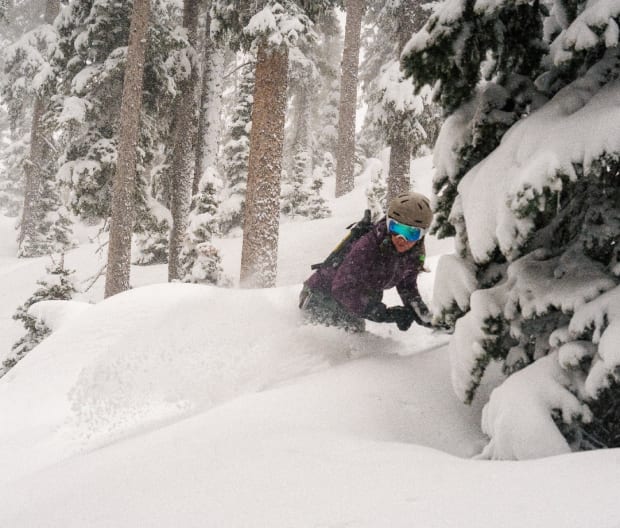
Christian Ridings
“I’d say we might get a couple dozen days like this in a season,” says Kecman casually. “Thirty, if we’re lucky.”
Thirty. Alrighty then. Please sign me up for the other 29.
“People do start booking these trips well ahead of time—as early as the summer for private groups,” says Kecman's co-guide and PSA's snow safety director, Travis Laverty, while jotting down some reference notes about the last run.
Guests can expect to ski or snowboard about 10,000 feet of vertical on a day trip with PSA, says the company’s website—which promises “a day of skiing you’ll remember forever.”
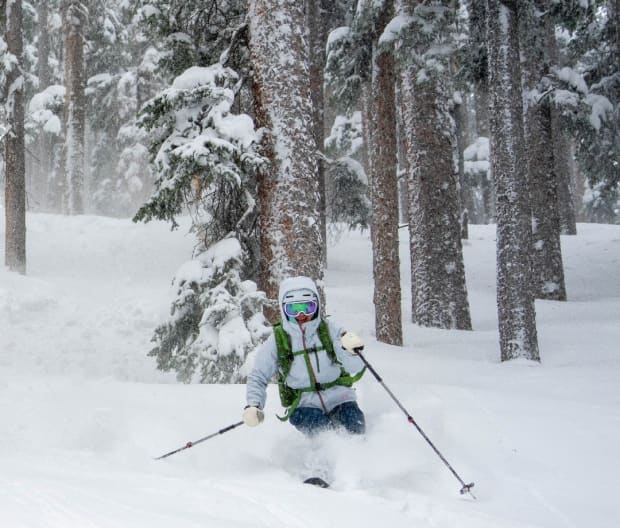
Isaac Dean
It's $600 per seat (or $6,000 to book the entire snowcat for the day). Compare it to heli-skiing rates or a few exorbitant days on the lifts at many of the big mountains, and it’s a relative bucket list bargain of sorts.
“With cat skiing you’ll get way more runs in than heli—where you’ll maybe have three or four longer ones,” says Laverty. “These ones are shorter, but most people don’t mind that,” he adds, noticing me still catching my breath on the cat ride back up.
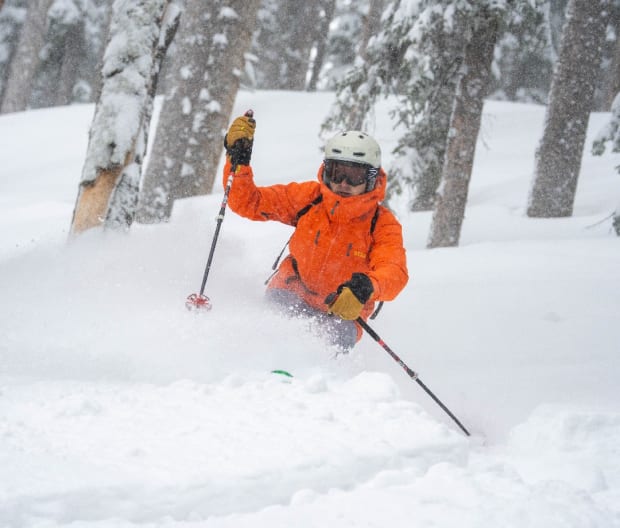
Isaac Dean
A Spell With a Tree Well
“This stretch can be quite the playground,” says Kecman, sort of ambiguously, setting us up for the day’s final run on a sporty-looking slope full of pillow drops and towering firs.
There are some downed logs lurking below all of this snow (“shouldn’t be an issue today”) and a deep, flat gully which will definitely be an issue for anyone who veers too far over and gets stuck in it, he adds. Carving one more safety boundary line, Kecman leaves us to our final fun run in the playground.
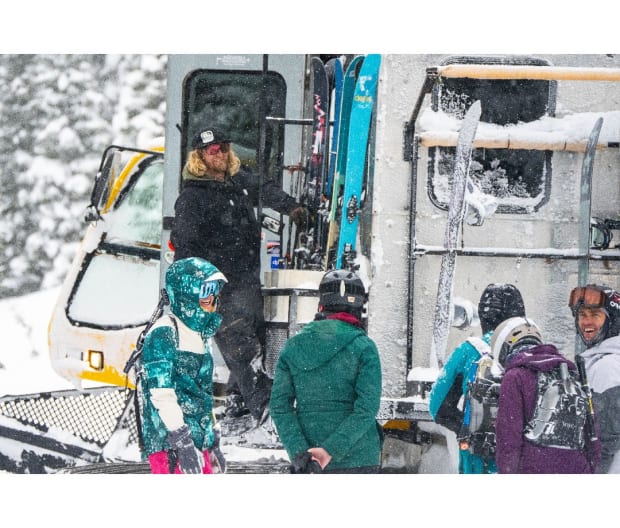
Isaac Dean
One group at a time, we’re off and plunging until there are just two of us left at the top. This looks like it might be the best run of the day. Heed the boundary line, ignore the deeply buried logs, avoid the gully, and exercise the usual playground caution. Over and over again, this quick safety recon has worked like a charm without incident.
That streak abruptly ends when my buddy, an excellent snowboarder, cruises over a lofty pillow of snow—and POOF! Like a trap door, it instantly collapses and crash lands her into the outer hollow of a nasty tree well hiding below.
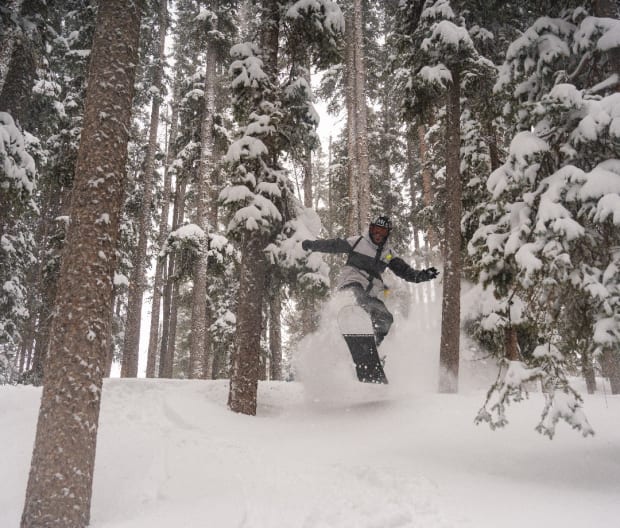
Christian Ridings
Splayed precariously near the edge of a dark rift of exposed roots dropping who knows how far down, she’s thankfully unhurt—but stuck. “I can’t get out of this,” she says, keeping nerves in check and wisely not moving a muscle. Inching up toward the edge, I reach out both ski poles and brace against stable ground as she carefully removes her board and gets a foothold.
The tandem, heave-ho recovery takes all of a minute before the danger is behind us and we’re back on track—with some added respect for the cat-skiing buddy system and hidden hazards that can be especially menacing on otherwise perfect powder days.
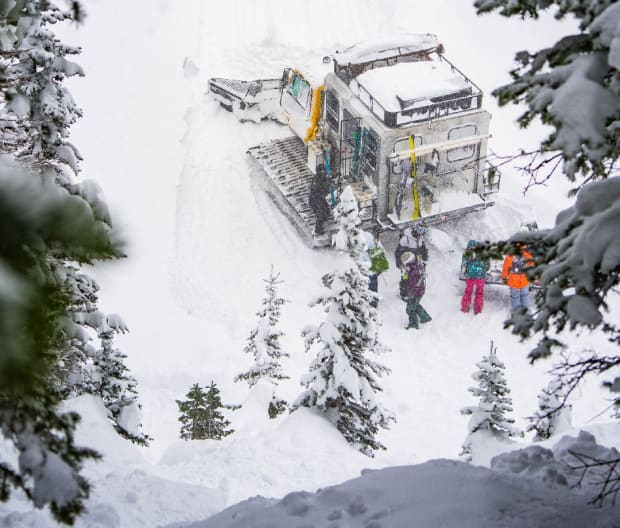
Isaac Dean
Thermal Spring Thaw
After a deep day of cat skiing in outer Purgatory, the half-hour drive to the Durango Hot Springs Resort and Spa is kind of a must if the highway allows it. During a break in the weather, our group heads to this recently revamped historic geothermal site (formerly Trimble Hot Springs) tucked in the Animas Valley just north of Durango.
Traipsing through this oasis in borrowed sandals and a double-reinforced tan robe on a cold evening, the only real challenge here is deciding which hot spring to melt into first. Over 40 of them are spread throughout the property, tiered with steamy pools overlooking a silhouetted mountainscape.
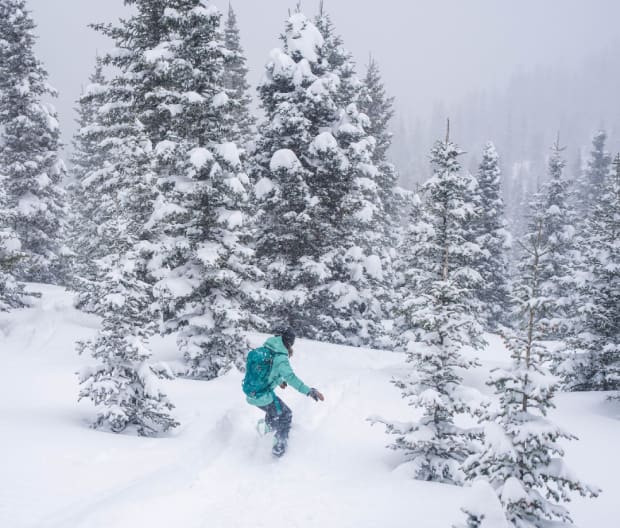
Isaac Dean
The thermal waters of Durango Hot Springs, once frequented by Ancient Puebloans and other Native tribes, are loaded with “over 30 natural minerals,” I’m told by the friendly staff—who are also keen to point out the facility’s state-of-the-art Oxium Quantum Fusion system for optimal mineral absorption (“First in the world!”) and AquaGen Nano Bubbles infuser for “added oxygenation.”
If all this hot springs science leaves you a little dizzy, the easy answer is just to hop from one soothing pool to the next and absorb their gushing word for it.
“Do you like hot stuff?” a chatty stranger with a ponytail asks, out of the blue, from the steamy half of the yin-yang pool—a dual hot-cold plunge.
He’s been holding court with a captive audience of quiet soakers for the last several minutes, spinning yarns about his crazy life and times, and I’m starting to wonder what else might be in this water.
“My wife and I make salsa,” ponytail clarifies. “We cannot keep it in stock. I always stash some extra jars in my car if anyone’s interested.”
It looks like he might have some takers. I opt to escape into the yin-yang pool’s adjacent 54-degree cold plunge instead, which is a dream for aching muscles if you can handle it. It’s shocking alright—and even more challenging, it turns out, when forced to listen to a garrulous soaker in an adjacent 105-degree pool carry on about how incredible his salsa is.
Word has it there’s another yin-yang pool out of earshot on the other end of the property, with an even colder and more beneficial 45-degree plunge. “That’s where the real weirdos are,” the salsa salesman tells me. So that’s where I head.
He's right. You do need to be pretty weird to voluntarily set thigh in a near-freezing ice bath on a winter’s night just down the road from Purgatory. It’s lose-your-breath, vein-crystallizing cold. But the guy across from me in a Broncos cap, dunked up to his neck—eyes lightly closed, breathing like a snoozing child—seems to be enjoying it. How long has he been in here?
“Five-and-a-half minutes,” he whispers serenely.
Another eight seconds and it’s time to jump ship and climb into the steaming, humane half of the yin-yang pool.
“Don’t do it,” he warns, slightly lifting his eyelids. “You want to end cold. It’s much better for your body. Otherwise you undo all the benefits.”
Obediently, I exit the pool and shiver my way into the private clubhouse—where the hottest, longest shower in recent memory blissfully undoes everything. I'll play by the book on the mountains, but take my chances here.
For more information about snowcat skiing at Purgatory visit purgatory.ski
Best Gear for Snowcat Skiing
On a steep, deep, and stormy day of cat skiing in San Juan National Forest, here's the best gear to stay warm, dry, and stoked.
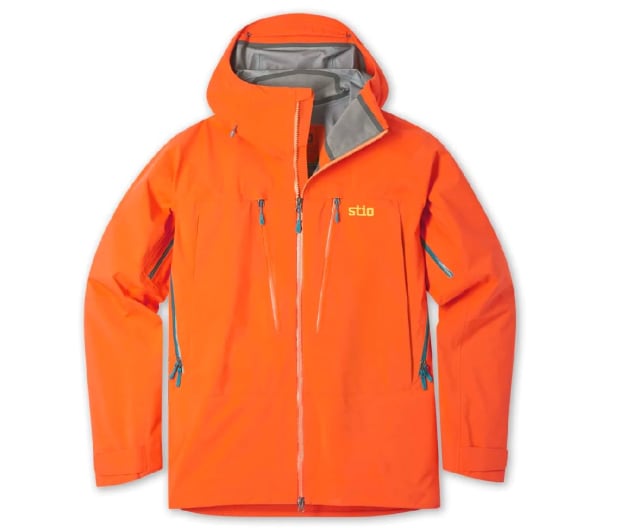
Courtesy Image
1. Stio Objective Pro Jacket
Our favorite waterproof-yet-breathable defense on any given ski day is GORE-TEX, but different constructions of the miracle material work best for different situations. Designed with knee-deep powder and stormy weather in mind, this GORE-TEX 3L Pro jacket (3L means three layers) is the company’s “pinnacle ski piece.” Paired with a light down midlayer, this jacket keeps cold, snowy conditions in check without feeling cumbersome on technical backcountry runs. Plentiful pockets, inside and out, are exactly where you want them without looking like a zipper convention. The hood, with fixed halo adjust, adds extra neck-to-noggin comfort overtop a helmet without hindering peripheral sight lines. The jacket comes in two classy shades of blue, but our favorite is “beehive orange”—a radiant standout in deep powder.
[$699; stio.com]
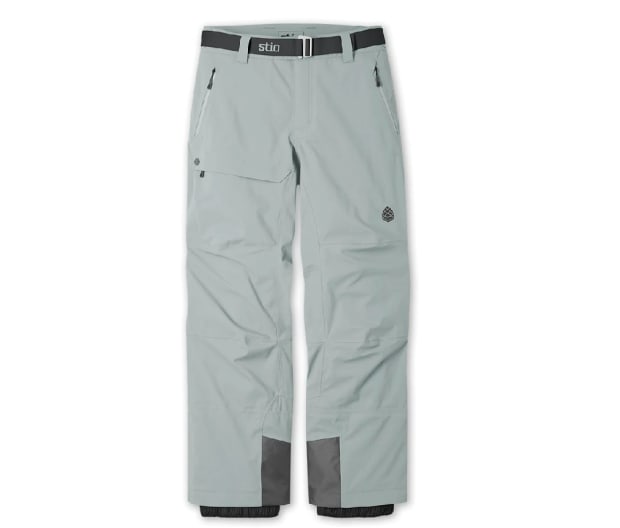
Courtesy Imae
2. Stio Environ Pant
The “Teton-tested” Environ Pant is made from 100 percent recycled polyester fabric with PeakProof™ (waterproof, breathable) tech that reliably repels the elements. Pair the seam-sealed pants with a midlayer (like REI's Teton Fleece Pants) to keep warm and dry all day. A streamlined cut; adjustable, belt-looped waist; and an abrasion-resistant kick patch with internal boot gaiter serve you well for rambunctious mountain use. Thigh vent zips also prove handy when it warms up on skinning ascents or during the snowcat ride back to the top.
[$419; stio.com]
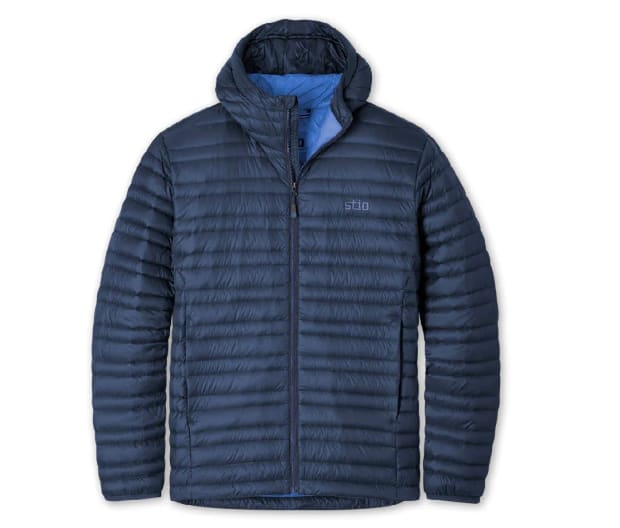
Courtesy Image
3. Stio Pinion Down Hooded Jacket
Nailing the warmth-to-weight ratio can be tricky with a down midlayer. You want it to stand up to the cold without mummifying you in feathers. At a lean and light 12 ounces, Stio’s go-to 800-fill down jacket is a godsend. Sandwiched between a GORE-TEX shell and a Smartwool baselayer, it provides the perfect proportion of puffy warmth without overdoing it. When you don’t need it, the jacket packs into its own pocket.
[$285; stio.com]
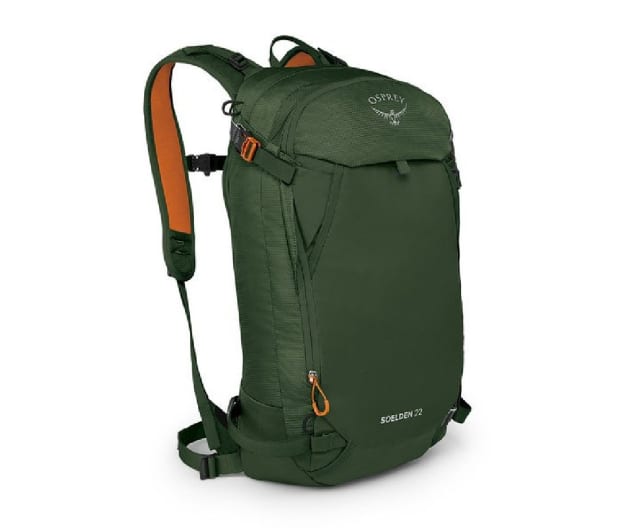
Courtesy Image
4. Osprey Soelden 22 Backcountry Ski Pack
Osprey’s smallest, lightest technical touring day pack can support everything you’ll need to carry without that leaden feeling. Designed for long climbs and swift descents with comfort in mind and quick access to safety gear in a pinch, Soelden 22 is a compact feat of engineering complete with shovel handles; probe sleeves; water reservoir; radio cord support; stash pockets; and nifty optional carrying systems for your skis, snowboard, helmet, ice tool, etc. Skiing all day with avi tools and other bric-a-brac on my back, I forgot I was wearing this thing—and there’s no bigger compliment than that.
[$155; osprey.com]
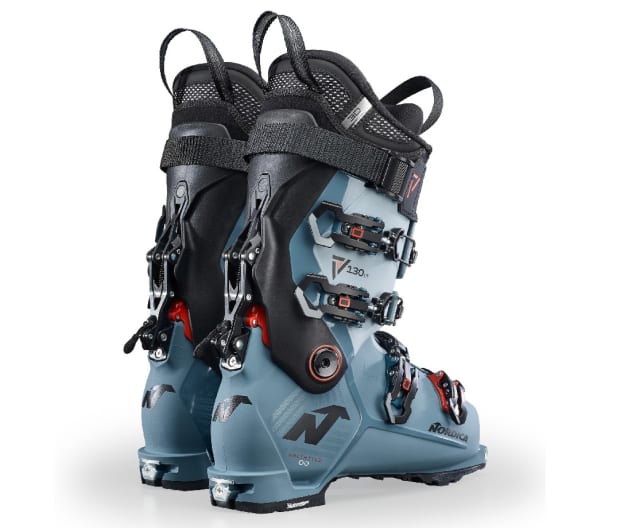
Courtesy Image
5. Nordica Unlimited 130 DYN Boots
Hybrid boots that can handle alpine skiing’s full range for touring and downhill keep improving by leaps and bounds. Nordica’s new Unlimited line offers the latest A/T boot one-upmanship with some of the most advanced features to treat your feet and ankles. The Unlimited 130 DYN (part of a six-boot series replacing the company’s Strider line) offers a lighter, more mobile boot for human-powered ascents. A new Tri Force cuff utilizes three different densities of plastic molded together for a precision fit around the shin and improved lateral support. The boot’s innovative cable buckle system is designed to cradle the forefoot and provide a wide 65-degree range of motion when it’s time to hoof it, break out of the skins, or step into a snowcat. Primaloft® Light liners add extra protection against the chill and Michelin GripWalk soles boost durability. Weight: 1,680g (size 26.5); flex: 130.
[$850; nordica.com]
from Men's Journal https://ift.tt/zIlYDgv


0 comments